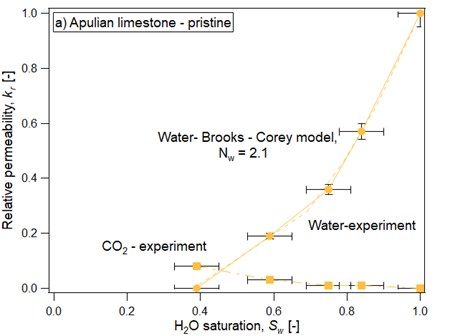1. Multi-physical process during Geologic carbon storage (GCS)
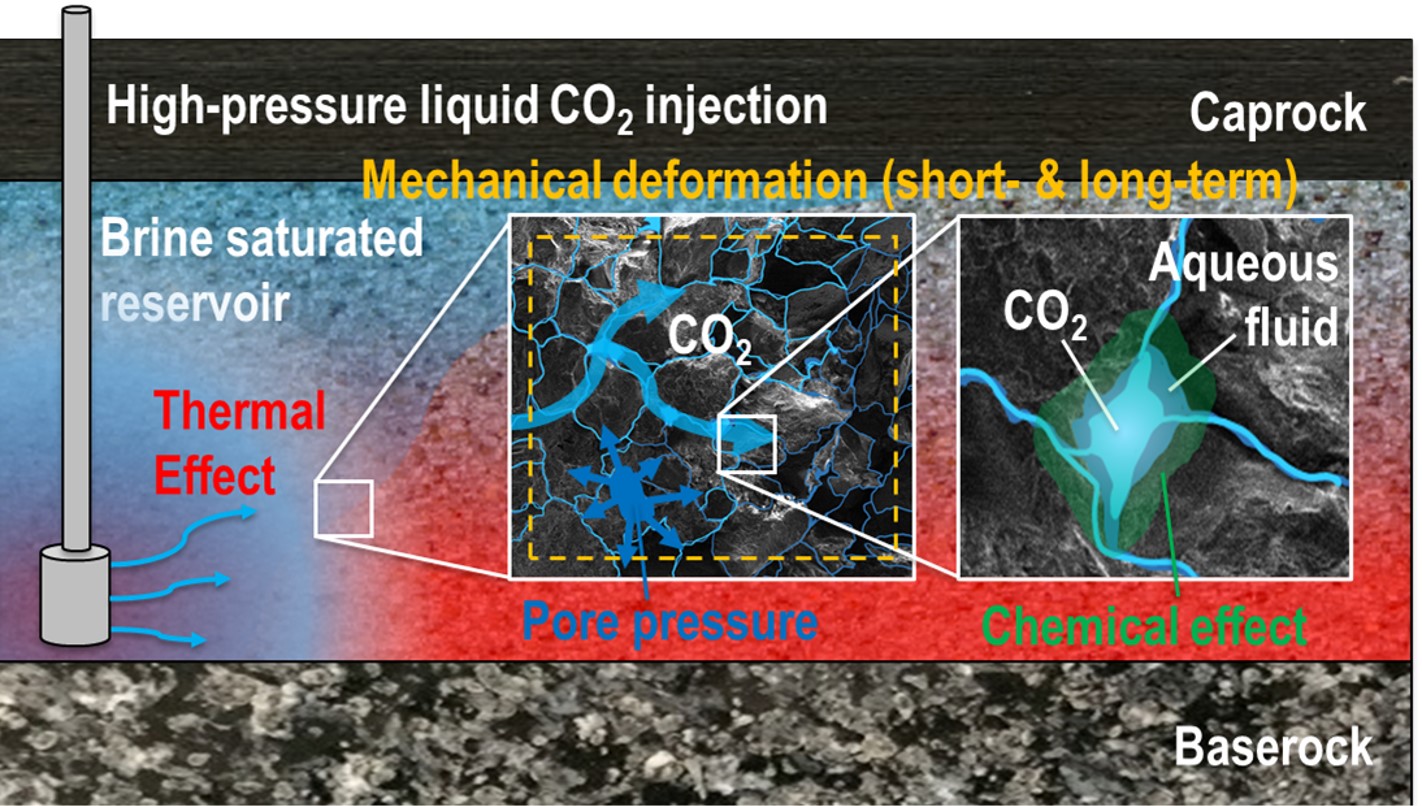
As an effort to reduce the atmospheric emission of the anthropogenic CO2, geologic carbon storage (GCS) has been introduced as a promising method by permanently isolating CO2 in the subsurface reservoirs. The reservoirs should be relatively high porous and permeable and be confined by the low-permeable sealing layers on the top (caprock) and bottom (basement rock) to permanently trap the CO2 underground. As high-pressure CO2 is injected into the reservoir, usually in the liquid state, it induces the multi-physical processes that involve changes of the stress state, pore pressure, and temperature.
2. Potential issues during CO2 injection

As high-pressure CO2 is injected into the reservoir, an instant and direct poroelastic response occurs due to the increase in the pore pressure which would decrease the effective stress. On top of the poromechanical response, the liquid CO2 is injected at a lower temperature that may induce thermal stresses by cooling the adjacent region of the injection points. In addition, the acidic mixture of brine and CO2 can induce a chemical reaction with the composing minerals of reservoir rock and affect its geomechanical properties. Therefore, considering the mechanical, thermal, and chemical effects, the importance of properly addressing this coupled behavior of reservoir rock during CO2 storage can be highlighted.
3. Effect of CO2 injection on the poromechanical response of reservoir rock
The chemical effect of CO2 injection on the poromechanical properties of reservoir rock is studied by evaluating its strength, compressibility, time-dependent behavior, and flow properties. These material properties are accurately measured at in-situ conditions before and after CO2 injection. Details on the research are presented as journal papers in the “Publication” section.
1) Strength and compressibility
a) Apulian limestone (Kim et al., 2018)
For limestones, the effect of CO2 injection was observed by dissolving the carbonates, resulting in an increase in porosity and a decrease in the strength parameters and stiffness. For this study, Apulian limestone was CO2 treated for three days to observe a controlled effect of CO2 injection. Detailed results are elaborated in Kim et al. (2018).

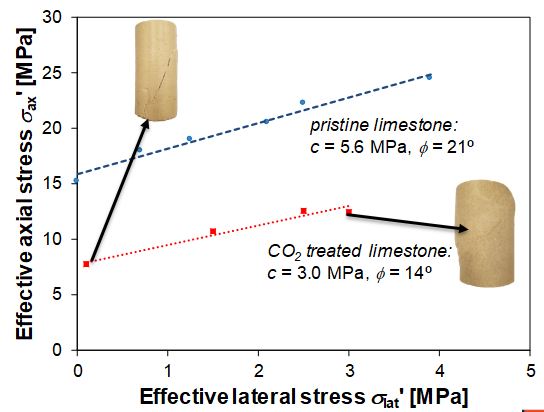
b) Berea sandstone (Tarokh et al., 2020)
For sandstones, the effect of CO2 injection did not show a significant effect on the poromechanical behavior of Berea sandstones. Tarokh et al. (2020) discussed the minor effect of CO2 injection on the poroelastic properties, while it was pronounced on the time-dependent behavior, and emphasized the importance of considering the time-dependent behavior in constitutive models.
Heat damaged CO2 treated damaged
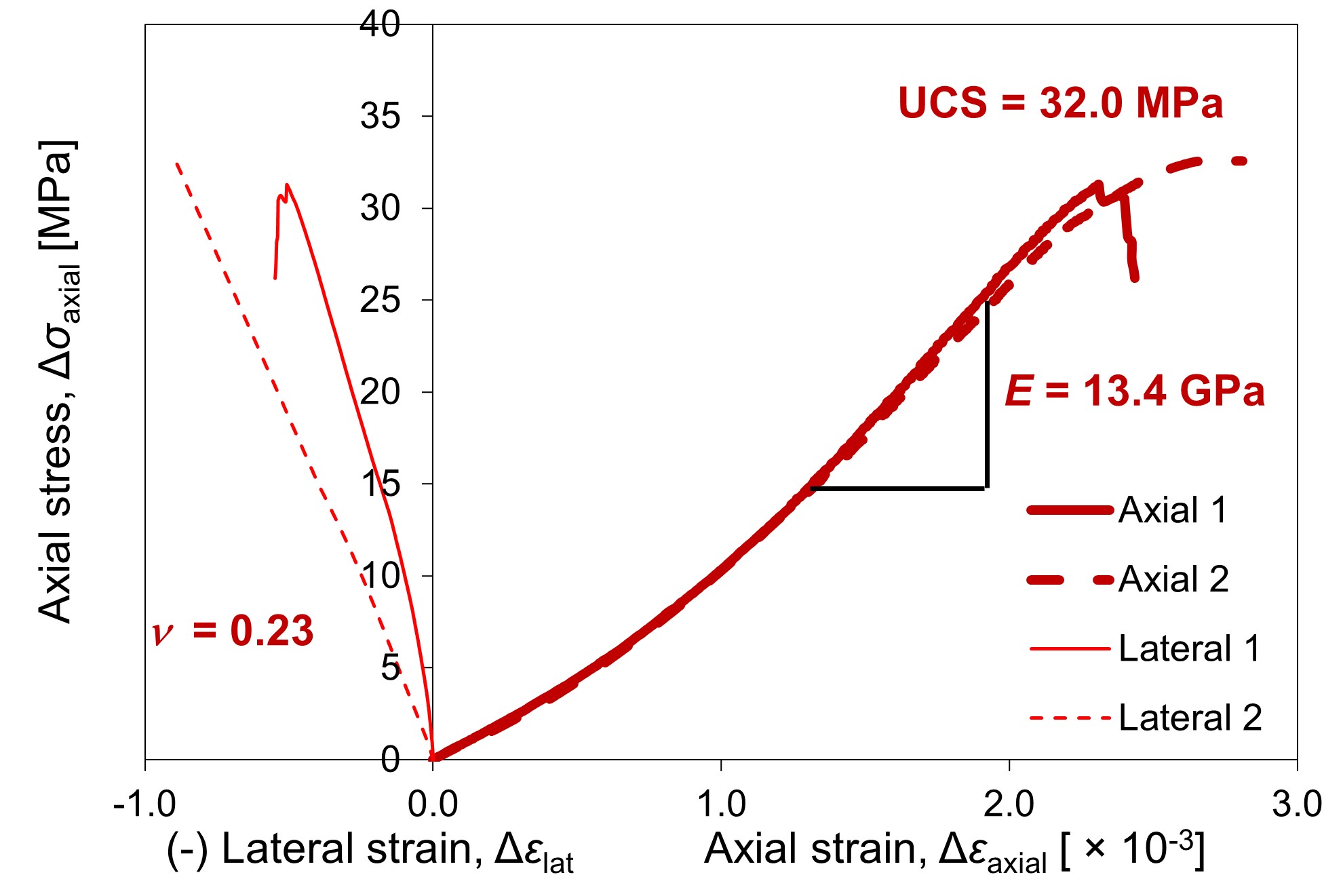
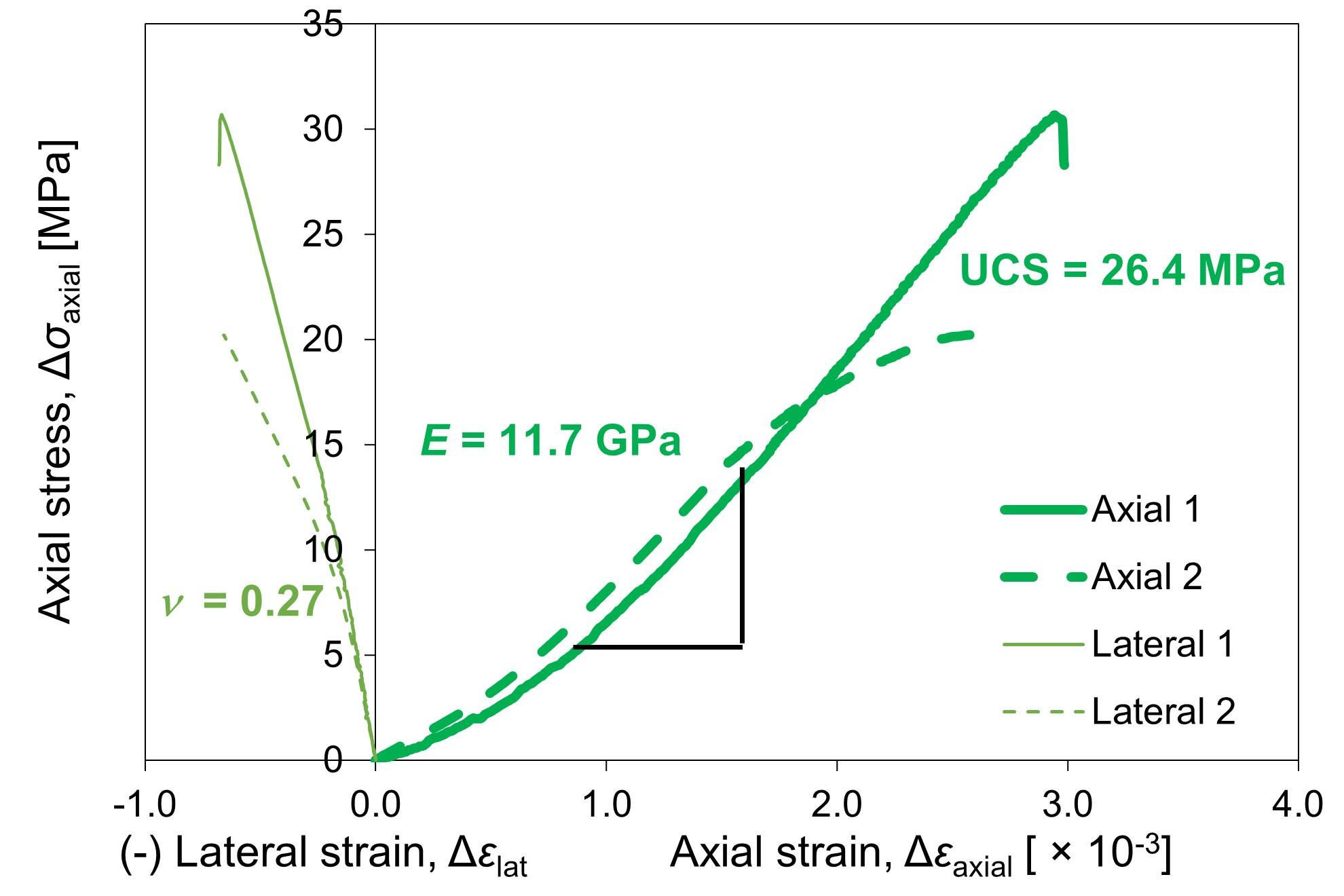
2) Time-dependent behavior (Tarokh et al. 2020)
After reaching full saturation, the time-dependent behavior can be observed experimentally by monitoring the pore pressure build-up under the undrained condition, while the total mean stress remains constant. The bulk viscosity is calculated, and results showed that after CO2 injection, the time-dependent behavior is promoted. Considering that GCS aims to safely store CO2 for thousands of years, this indicates that is important to consider this creep behavior for successful and geologic carbon storage.
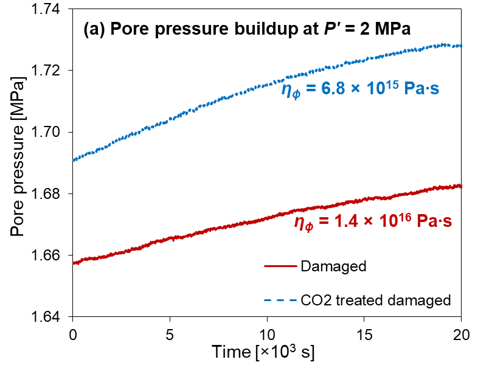
3) Flow properties (Kim et al., 2018)
Due to the pre-existing aqueous fluid, a multi-phase flow occurs during CO2 injection. A unique method to evaluate the relative permeability curve by measuring the poroelastic properties were introduced, and the results showed that CO2 injection alters the shape of the curve, where it changed from a quadratic curve to a quasi-linear curve after CO2 injection. Details are elaborated in Kim et al. (2018).
